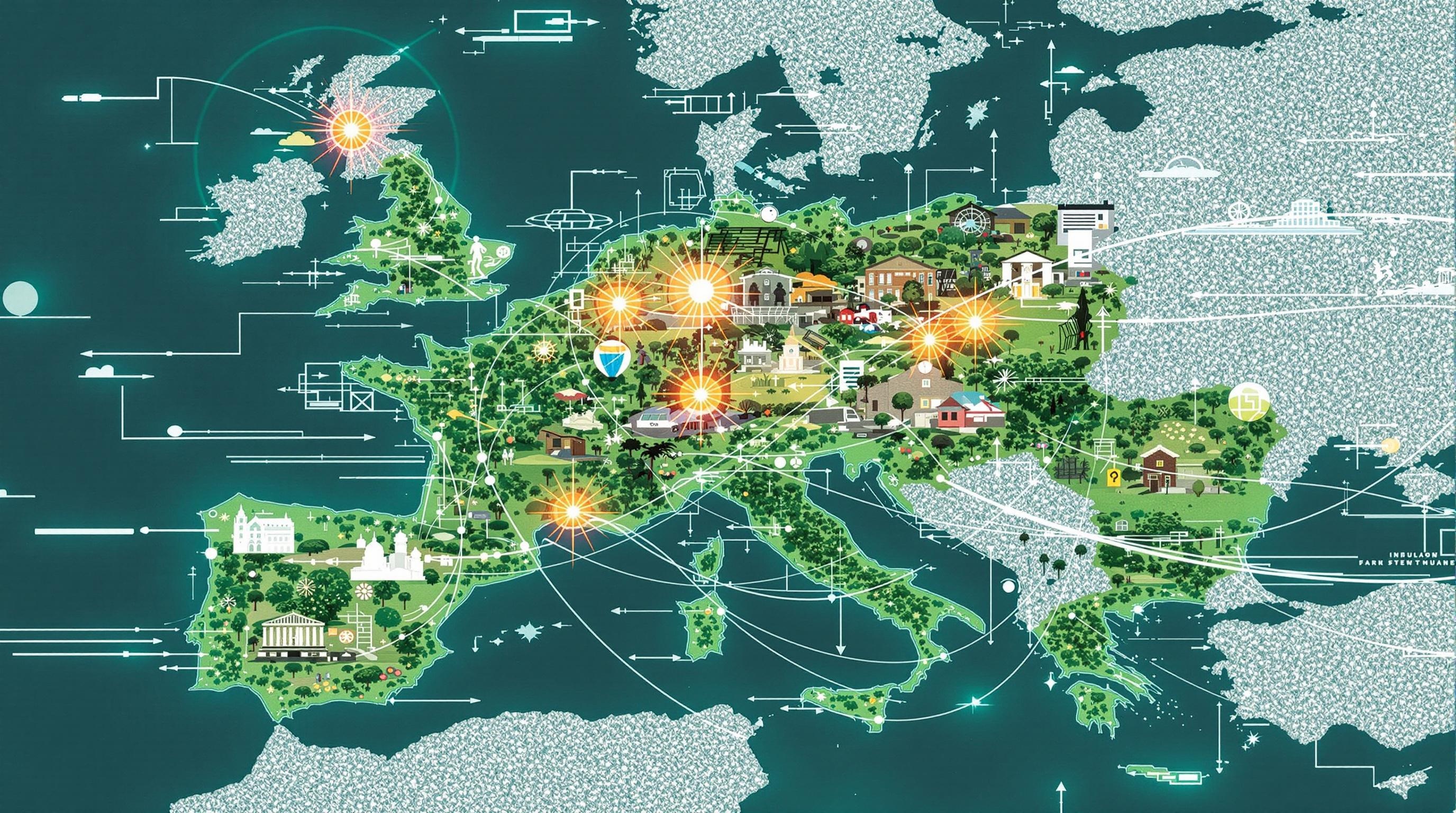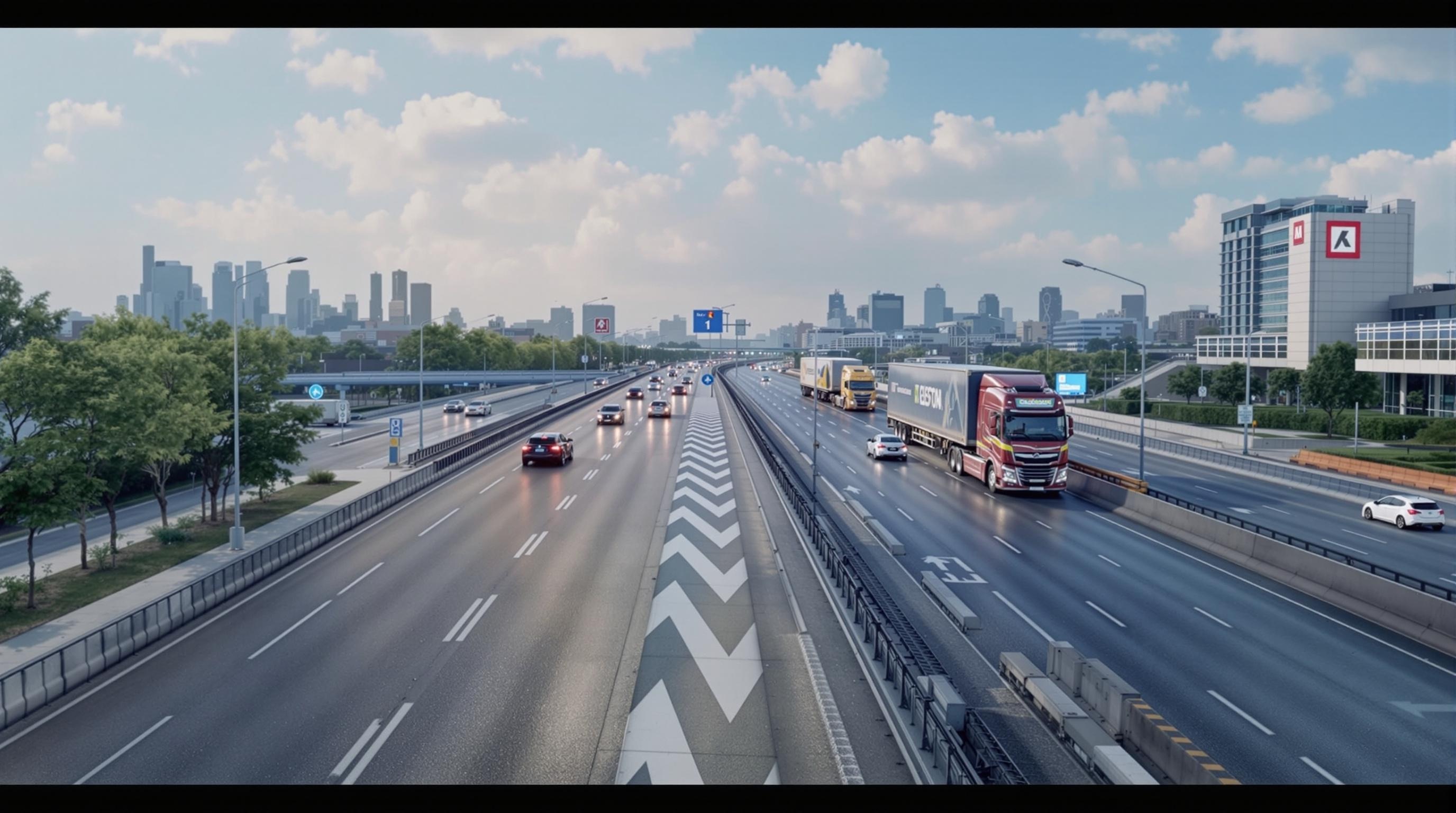Digital twin technology stands at the forefront of supply chain, operations, warehouse, and logistics management. I see it driving efficiency, resilience, and sustainability across the industry. With strong investment and the power of AI, IoT, and real-time analytics, digital twins push organizations from reactive to predictive approaches. This shift brings clear benefits: cost savings, agility, and better compliance.
Key Takeaways
- Adoption of digital twins is picking up speed worldwide. North America and Europe set the pace in market growth, investment, and innovation shaped by regulations.
- Industry leaders report impressive results—up to 57% fewer delivery delays, 25% reduction in unscheduled repairs, and 15% improvement in warehouse space use.
- Predictive analytics and IoT work together to support proactive maintenance, manage risks, and optimize resource allocation across supply chains and fleets.
- Advanced platforms and simulation tools support data-driven slotting, compliance with environmental standards, and real-time scenario planning. This leads to faster, safer, and leaner operations.
- AI, 5G, and autonomous systems will shape supply chains in the coming years. By 2030, digital twins could drive up to 60% of operational decisions, boosting both sustainability and competitive edge.
Strategic Benefits of Digital Twin Technology
Efficiency and Cost Savings
Organizations implementing digital twins can achieve significant cost savings through more efficient operations, reduced downtime, and optimized resource allocation.
Agility and Resilience
Real-time analytics and scenario planning empower businesses to adapt quickly to disruptions and emerging risks, enhancing overall supply chain resilience.
Sustainability and Compliance
Advanced simulation tools help teams comply with environmental standards, minimize waste, and reduce the carbon footprint of supply chain activities.
Future Trends
Technology convergence—with AI, IoT, 5G, and autonomous systems—will reshape supply chains over the coming years. Analysts predict digital twins will influence up to 60% of operational decisions by 2030, driving sustainability and boosting competitive edge.
Recommendations
If you’re aiming to streamline your operations, digital twin technology offers a proven path. I recommend exploring platforms that combine real-time data with predictive analytics to stay ahead of disruptions and maximize performance. For more information on leading digital twin platforms, consider researching solutions that integrate data-driven insights for proactive supply chain management.
Market Growth and Strategic Value: Digital Twins as the New Supply Chain Backbone
Market Growth and Strategic Value: Digital Twins as the New Supply Chain Backbone
The surge in digital twin adoption is fundamentally reshaping supply chain operations at an unprecedented pace. North America leads this transformation, with its digital twin market in supply chain projected to soar from $492.8 billion in 2024 to $2.1 trillion by 2034—a 14% CAGR. This remarkable growth is fueled by advancements in AI and machine learning, as well as a rising demand for predictive analytics and maintenance. Europe is also making significant strides, boasting a 36.52% CAGR and targeting $127.8 billion by 2033. Here, the drive for sustainability and increasing regulatory pressures are pushing companies to reevaluate and modernize their operational strategies.
Industry Leaders and Strategic Investment
Key players such as Siemens AG and Dassault Systèmes are setting the pace for innovation. Their digital twin platforms enable circular economy practices, supporting everything from resource optimization to reduced waste. Siemens’ recent €2 billion commitment to R&D and Morgan Stanley’s $34 million investment in Vortexa clearly signal the market’s direction and the strategic importance of digital twins.
Transformative Potential of IoT Integration
Integrating IoT with digital twins—using solutions like AWS IoT TwinMaker—transforms raw data into actionable insights. This empowers organizations to move from reactive to predictive operations, dramatically reducing costs and enhancing resilience.
Compelling Returns: The Strategic Lever
The financial incentives are clear: for every $1 invested in digital twin initiatives, organizations realize $2.30 in savings. Digital twins have evolved into a strategic lever for driving growth, bolstering resilience, and advancing sustainability across the supply chain.
Critical Value Drivers for Digital Twin Adoption
- Accelerated decision-making with real-time data integration
- Reduced downtime and maintenance costs through predictive analytics
- Enhanced sustainability reporting and regulatory compliance
- Stronger competitive positioning as digital twins become industry standard
Digital twin technology isn’t just about keeping pace—it’s about gaining a decisive edge in a rapidly evolving market.

Operational Efficiency and Risk Mitigation: From Reactive to Proactive Supply Chains
Digital Twins: Driving Operational Efficiency
Digital twins are revolutionizing operational efficiency by enabling organizations to anticipate and prevent issues before they arise. Through real-time simulation and predictive analytics, companies are shifting from reactive responses to proactive strategies. For example, Maersk leverages digital twins to foresee and mitigate challenges such as port congestion and geopolitical disruptions, resulting in a 57% reduction in delivery delays. This is a powerful testament to how digital twins are strengthening supply chain resilience.
Warehouse Optimization with Digital Twins
Traditional warehouse planning methods, like spreadsheet-based approaches, often leave 15–20% of space underutilized. In contrast, DHL has implemented digital twin-driven layouts, increasing storage capacity by 15%. Their warehouse twins utilize predictive maintenance and IoT sensors, leading to:
- 25% reduction in energy consumption
- 20% decrease in maintenance costs through optimized HVAC management
Transportation and Predictive Maintenance
Digital twins are also transforming transportation. Lorry-Planet’s vehicle twins use live sensor data to reduce unscheduled repairs by 25%, highlighting the real-world value of predictive maintenance in logistics operations.

Warehouse Optimization: Data-Driven Slotting, Picking, and Compliance
The impact of digital twins on warehouse optimization is profound, making every decision data-driven and measurable. AI-driven systems like Optioryx’s order clustering have reduced picker travel by 25–40% compared to traditional methods. This isn’t just about speed—reduced travel also leads to less fatigue, fewer errors, and significant cost savings. Procter & Gamble’s use of dynamic slotting twins recalculates optimal layouts daily, slashing processing times by 30%—a game-changer for high-volume operations.
Simulation tools integrated with platforms like SAP EWM allow you to test new slotting strategies before making physical changes. This proactive approach reduces risk and uncovers process bottlenecks. For instance, BMW’s Munich site used digital simulations to cut forklift congestion by 22% before implementing changes, demonstrating the value of simulation-led planning.
For industries managing sensitive goods, Siemens’ IoT-enabled warehouse twins ensure compliance by maintaining 99.9% temperature and humidity adherence in pharmaceutical storage, safeguarding both product quality and regulatory requirements.
Key Benefits of Digital Twins:
- Advanced slotting strategies for faster order fulfillment
- Multi-echelon inventory management to support just-in-time delivery
- Reliable environment monitoring for compliance and quality
Implementing digital twins gives you a competitive edge, whether you oversee a single warehouse or a complex, multi-echelon network.
The push for digital twin technology in Europe is driven by robust public investment and a regulatory landscape that rewards digital maturity. The €8.1 billion Digital Europe Programme is pivotal in helping small and midsize enterprises advance beyond basic digital adoption—currently, 54% of European SMEs lag in digital maturity. With this funding, businesses can bridge the skills gap and accelerate supply chain optimization.

Digital twins have transformed fleet and transportation management by infusing intelligence into daily operations. Predictive routing, powered by real-time data and simulation, enables logistics teams to optimize shipping lanes, adapt instantly to disruptions, and minimize costs. For example, Hapag-Lloyd’s maritime digital twins enabled rapid rerouting during Suez Canal disruptions, saving $4 million per month in fuel—clear evidence that simulation-driven decisions can deliver substantial bottom-line impact.
Real-time telematics and in-cab sensor technology also contribute to safer fleets. Lorry-Planet’s deployment of such sensors reduced driver accidents by 15%. This is more than monitoring—it’s about leveraging live data to coach drivers, prevent risks, and safeguard assets. Autonomous platooning, where trucks travel in close formation managed by digital twins, enhances both efficiency and safety while reducing driver fatigue.
How Digital Twins Enhance Daily Fleet Operations
- Predictive routing uses up-to-the-minute data to avoid bottlenecks, storms, or unexpected closures—crucial during events like the Panama Canal drought in 2025. Maersk’s digital twins rerouted vessels, sidestepping x millions in penalties.
- Real-time safety monitoring, such as Lorry-Planet’s systems, directly improves driver behavior and incident response.
- Staffing and resource allocation are optimized with simulation tools. DHL’s “Crystal Ball” achieves 95% accuracy in staffing forecasts, reducing overtime costs and maintaining productivity.
- Advanced applications, like FreightAmigo’s AR/VR twins and IBM Sterling’s blockchain integration, offer immersive scenario planning and secure, transparent shipment tracking.
Investing in these technologies brings not only immediate ROI but also builds resilience into fleet operations. Companies leveraging digital twins remain agile, safe, and competitive—ready to meet future challenges head-on.

Future Outlook: AI, 5G, and the Autonomous Supply Chain
AI, 5G, and immersive technologies are rapidly transforming supply chain digital twins into smarter, faster, and more autonomous systems. For example, Walmart’s AI-powered digital twins have revolutionized procurement by instantly responding to weather changes and viral trends, resulting in a 33% reduction in stockouts. This marks a significant shift toward predictive and adaptive decision-making in modern logistics.
The rollout of 5G is accelerating real-time data flow across the entire supply chain—from ports and warehouses to trucks. Projections indicate that container dwell times could drop by 40% by 2027. With edge computing integration, these real-time updates become immediately actionable, reducing latency and enabling swarm intelligence, where fleets of autonomous vehicles or robots self-organize for optimal efficiency.
Innovations like FreightAmigo’s AR/VR-integrated warehouses allow staff to use smart glasses for visualizing optimal pick paths, halving training time. The digital thread connecting suppliers to consumers is becoming more sophisticated and efficient, streamlining every link in the supply chain.
Looking ahead, platforms such as Siemens MindSphere and the EU’s Destination Earth project are paving the way for a future where, by 2030, digital twins will autonomously manage up to 60% of supply chain decisions. This evolution isn’t about replacing people; it’s about empowering supply chain teams with unprecedented insights, driving resilience and sustainability throughout logistics.
- Real-time responsiveness to dynamic conditions
- Reduced training times and improved efficiency with AR/VR
- Autonomous, adaptive decision-making enabled by AI and digital twins
- Greater sustainability due to optimized operations and reduced waste
The future of supply chains—powered by AI, 5G, and autonomous systems—promises not only cost savings but also unprecedented resilience and innovation on a global scale.

Conclusion
Digital twins are redefining the supply chain landscape, unlocking new levels of efficiency, resilience, and sustainability. From predictive analytics and IoT integration to immersive AR/VR applications and AI-driven decision-making, digital twins are not just a technological upgrade—they are a strategic imperative. Organizations that embrace these innovations now will set the standard for the next era of global logistics.
Ready to future-proof your supply chain? Start exploring digital twin solutions today!
Sources:
Market.us – Supply Chain Digital Twin Market
Maersk – Digital Twin Applications
GAINS Systems – Case Studies
FreightAmigo – Digital Twin DHL Case Study
Shiptnl – Fleet Management Analysis
AnyLogic – OTD Forecasting
Simul8 – DHL Case Study
University of Rhode Island – Digital Twinning Research
Optioryx – Warehouse Optimization Study
Market Data Forecast – Europe Digital Twin Market
Market.us – Global Supply Chain Digital Twin Market
World Economic Forum – Shipping Report: Digital Twins
Hapag-Lloyd – Route Optimization White Paper
IDC – GetDoc
FreightAmigo – AR/VR in Warehouse Logistics










